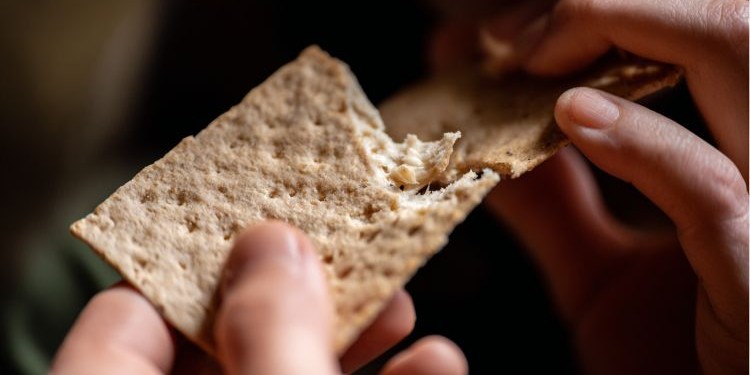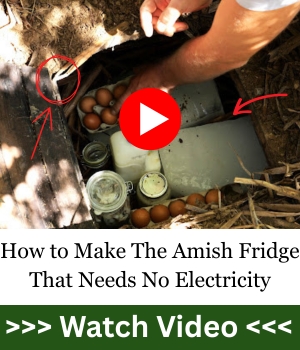Modern food storage is built on fragile timelines and refrigerated promises. Most of what we eat can barely survive a week without some kind of cooling system or chemical preservation. But there’s one food that scoffs at expiration dates and doesn’t need electricity, refrigeration, or fancy packaging to stay edible.
That food is hardtack—the cornerstone of centuries-old survival. It’s hard, durable, and honest. No sugar-coating. No nonsense. If your idea of a reliable meal comes in a plastic pouch with a “best by” date shorter than a presidential term, you’re missing the real power of preparedness.
Hardtack may not be glamorous, but it’s consistent. And in a world where consistency is rapidly becoming a luxury, this old-school staple is more relevant than ever. Knowing how to make and store hardtack is a skill that turns you from a consumer into a provider. That’s not just knowledge—it’s leverage.
What Is Hardtack?
Hardtack is the most unapologetically simple food you can make: just flour, water, and salt. It’s a dry, dense cracker that feels more like a brick than a snack, but that’s exactly the point. It’s built to endure. You could toss a tin of hardtack into a trunk and forget about it for twenty years—when you find it again, it’ll still be edible.
The lack of moisture is what gives it legendary shelf life. Without water, mold and bacteria don’t stand a chance. That’s why hardtack doesn’t spoil—it just waits. You can store it in a cool, dry place and come back decades later knowing it’s still a viable food source. For emergency storage, it’s nearly unbeatable.
People used to joke that hardtack could survive a war. That’s because it did. And in a time when we’re realizing how vulnerable our food systems really are, a cracker that doesn’t give up after six months is worth its weight in gold. Hardtack isn’t a luxury—it’s a lifeline.
The History of Hardtack
Hardtack’s history is as tough and enduring as the food itself. Sailors on long voyages depended on it when fresh supplies ran out. It was a battlefield ration during the American Civil War, stashed in soldiers’ kits to provide calories during long marches and prolonged standoffs. It traveled the oceans and crossed the front lines.
Ancient armies had their own versions of hardtack. The Romans called it buccellatum. It fueled entire military campaigns when fresh food wasn’t an option. When you’re weeks from a supply depot and surrounded by uncertainty, you need something that won’t rot before your next stop. That’s where hardtack shines.
This wasn’t just a food of desperation—it was a food of strategy. Commanders could plan longer, riskier campaigns knowing their troops wouldn’t starve. Even in the early days of American frontier life, settlers relied on hardtack for the same reason: it held up through rough travel, harsh winters, and unpredictable conditions.
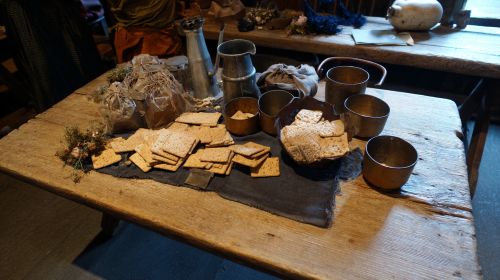
Advantages of Hardtack
First and foremost, hardtack lasts, more than just storing flour. We’re talking years, even decades, with no refrigeration and minimal storage needs. You don’t have to rotate it every six months or babysit it like canned goods. Just make it, dry it, and store it. It sits patiently until you need it most.
Related: How Long Will Food Last In Your Fridge Without Power?
It’s also incredibly easy and cheap to make. No yeast. No special equipment. Just a mixing bowl, an oven, and some flour and salt. You don’t need to be a homesteading expert to make your own batch. Once you’ve done it once, you’ll wonder why this isn’t standard practice in every household.
And let’s talk space efficiency. Hardtack stacks neatly, stores in tight spaces, and doesn’t require special containers. A year’s supply can fit in a single airtight bin. Compare that to the bulk of canned goods or freeze-dried packets, and the efficiency becomes obvious. It’s lean, mean, and reliable.
Disadvantages of Hardtack
Let’s not sugarcoat it—hardtack is tough. You won’t be biting into it like a saltine. If you try to take a dry bite without softening it first, you’re more likely to crack a tooth than satisfy your hunger. It’s not a food made for comfort. It’s made for necessity.
The taste? Basic. You’re not getting flavor fireworks. It’s bland, dry, and a little salty. That’s by design. The simplicity is what gives it longevity. You’re not eating hardtack because it’s delicious. You’re eating it because it’s still edible after your fancy snacks have long since turned to compost.
It also lacks nutritional complexity. Hardtack gives you carbs, but not much else. That’s fine if you’re pairing it with dried meat, broth, or other staples. But on its own, it’s fuel, not a full meal. Knowing its limitations means knowing how to plan around it.
Modern Uses of Hardtack
Today, hardtack has found a second life among survivalists, preppers, homesteaders, and off-grid communities. It’s a no-fuss, high-value item that fits into any long-term food storage plan. Whether you’re building a bug-out bag or prepping for a blackout, hardtack belongs in your stash.
It’s also great for hiking, hunting trips, and remote camping. When refrigeration isn’t an option and weight matters, hardtack brings the calories without the perishability. Paired with jerky or trail broth, it becomes part of a reliable, portable meal.
And don’t underestimate its value as a barter item. In any long-term crisis, food becomes currency. A well-made batch of hardtack—wrapped and stored properly—could become one of the most tradable assets in your stockpile. You’re not just storing food—you’re storing options.
How to Make Hardtack
You’ll need:
• 1 lb flour
• 1/2 pint water
• 1/2 tablespoon sea salt
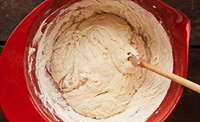 Preheat the oven to 350 degrees. Add the flour and salt into a mixing bowl, and then pour the water. Mix all ingredients together.
Preheat the oven to 350 degrees. Add the flour and salt into a mixing bowl, and then pour the water. Mix all ingredients together.
Use extra flour if necessary to make sure the dough is no longer sticky.
However, be careful not to make the dough too dry. If you add too much flour, add slightly more water.
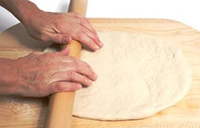
Knead the dough until it is easy to work with.
Use the rolling pin to roll the dough into a rectangular shape. Hardtack was around a half inch thick, so don’t worry about making the dough thin.
Bake the dough for 30 minutes.
Take the dough out of the oven and cut it into large squares (around 3 inches by 3 inches).
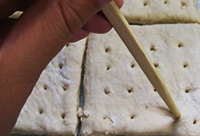
Then poke four rows of four holes in the cracker using a stick (or a fork).
Flip the squares and return to the oven for 30 more minutes (even an hour just to make sure it gets completely dehydrated). Allow the hardtack to completely cool inside the oven.
The goal here isn’t taste or texture—it’s shelf life. The drier the better. When done right, you can throw your batch in a metal tin, stash it in the attic, and forget about it until the day you need it. That kind of reliability is rare in the modern food world.
Adding More Ingredients
If you’re making hardtack to use within a few months, you can get creative. Add spices, herbs, or even a touch of honey to give it some flavor. Mix in garlic powder, dried onions, or cracked pepper. These little additions make a big difference when you’re living off the same staples for days or weeks.
Some folks add rendered fat or oil to the mix, turning it into more of a biscuit. That boosts calories and makes it softer, but also shortens shelf life significantly. If you’re storing for long-term survival, skip the fat. If you’re baking for a winter camping trip, it might be worth it.
You can also experiment with grains. Try subbing in whole wheat, rye, or cornmeal for different textures and flavors. Just remember—every change shifts the shelf life. The more basic the formula, the more it’ll endure.
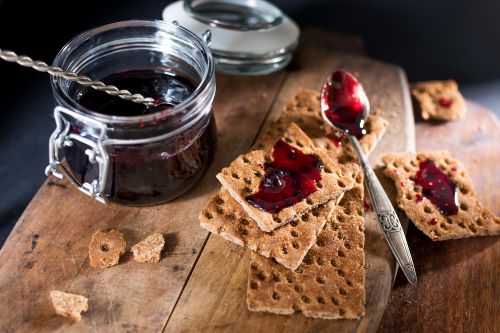 Eating Hardtack
Eating Hardtack
Eating hardtack raw is a jaw workout you’ll remember. The traditional method? Soak it. Soldiers used to dunk it in coffee or stew to soften it before biting in. Some even fried it in bacon grease for a crude but satisfying meal.
You can also crumble it into soups or broths. It acts like a thickener and provides slow-release energy. Pairing it with meat or fat rounds out the nutrition and makes it more satisfying. For those who want to go the extra mile, you can even grind it into meal and mix it into emergency porridge or bannock-style camp bread.
Eating hardtack is about function, not pleasure. But when you’re hungry, tired, and staring down a cold night, those hard edges start to feel like security. It’s not just food—it’s insurance you can chew.
One Survival Book That Still Honors Hardtack’s Legacy
 If this kind of food security speaks to you—if you value independence, knowledge, and the forgotten ways of preserving food—you need to check out The Lost Super Foods. This book isn’t just a list of old recipes—it’s a reclamation of food independence. Inside, you’ll find the methods and meals that kept people alive before refrigeration, freezers, or fragile supply chains.
If this kind of food security speaks to you—if you value independence, knowledge, and the forgotten ways of preserving food—you need to check out The Lost Super Foods. This book isn’t just a list of old recipes—it’s a reclamation of food independence. Inside, you’ll find the methods and meals that kept people alive before refrigeration, freezers, or fragile supply chains.
It includes forgotten preservation methods, lost techniques, and reliable foods that last—including refined variations of hardtack and long-term meals you can make right now with common ingredients. If you’re serious about preparedness, this book is a foundational resource.
In a world where most people can’t go a day without a trip to the store, The Lost Survival Foods shows you how to step back into control—one batch of hardtack at a time.
Final Thoughts
Hardtack is more than a food—it’s a mindset. It reminds us that simplicity and durability still matter. It’s a throwback to an era when people planned ahead, stored wisely, and understood that survival wasn’t about convenience—it was about readiness.
Whether you’re building a deep pantry or just want one food that won’t fail you, hardtack deserves your attention. It’s not just history—it’s a future-proof staple in a world that’s forgotten how to last.
You May Also Like:
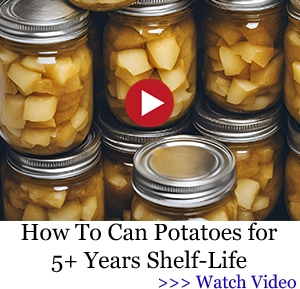 How To Make The Long-Lasting Native American’s Wojapi Sauce
How To Make The Long-Lasting Native American’s Wojapi Sauce
How To Make A Natural Painkiller That Works (video)

